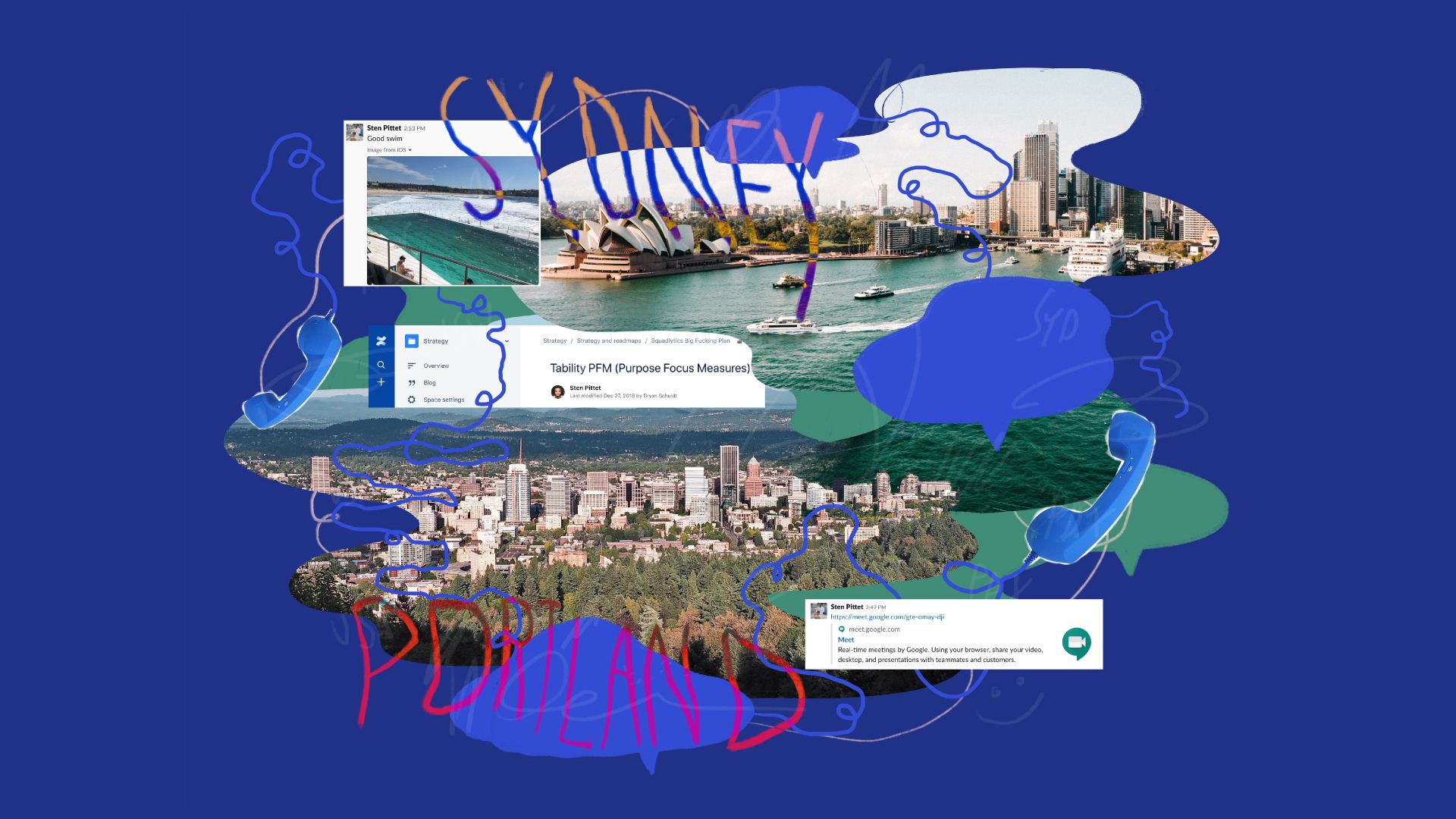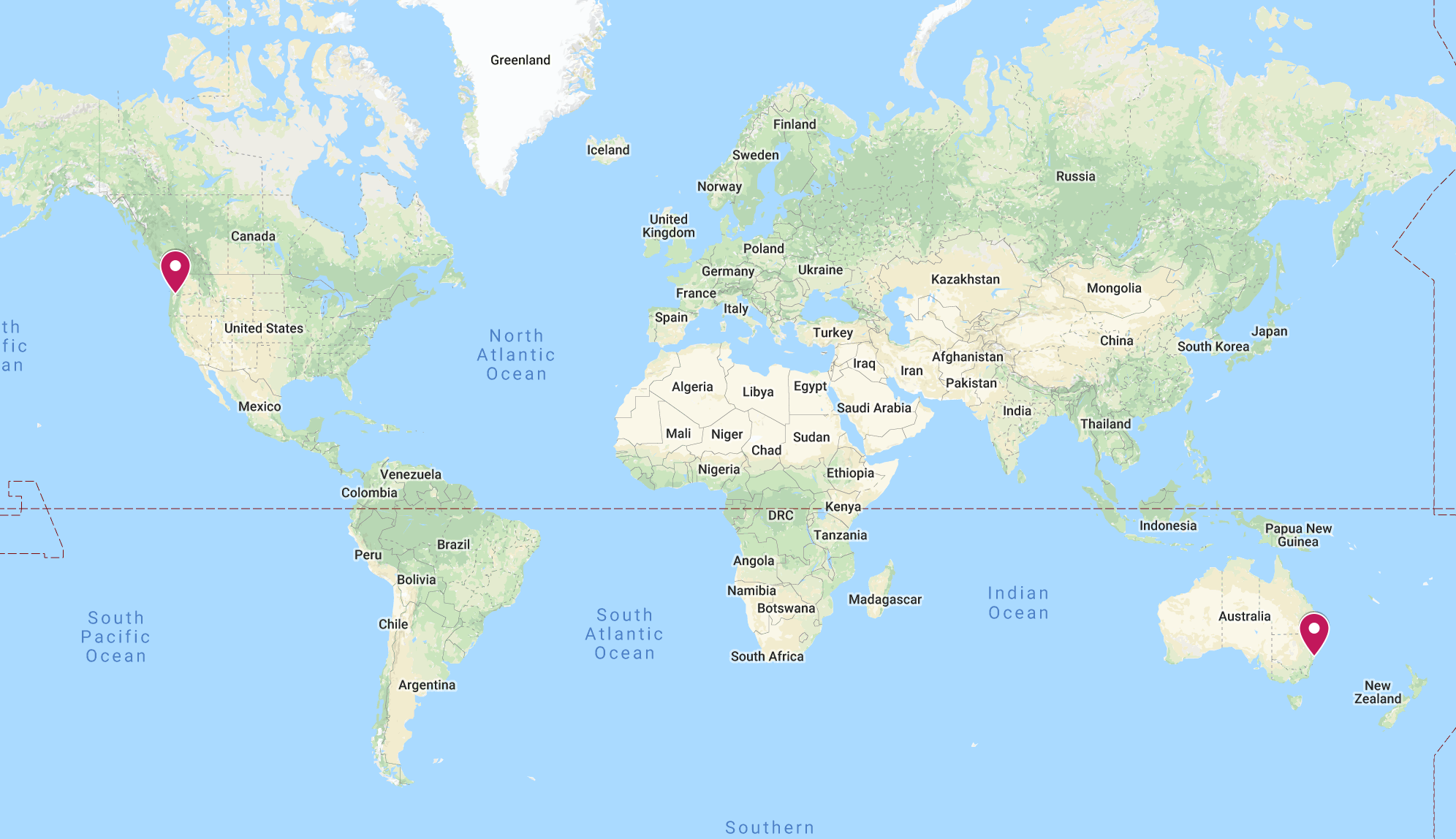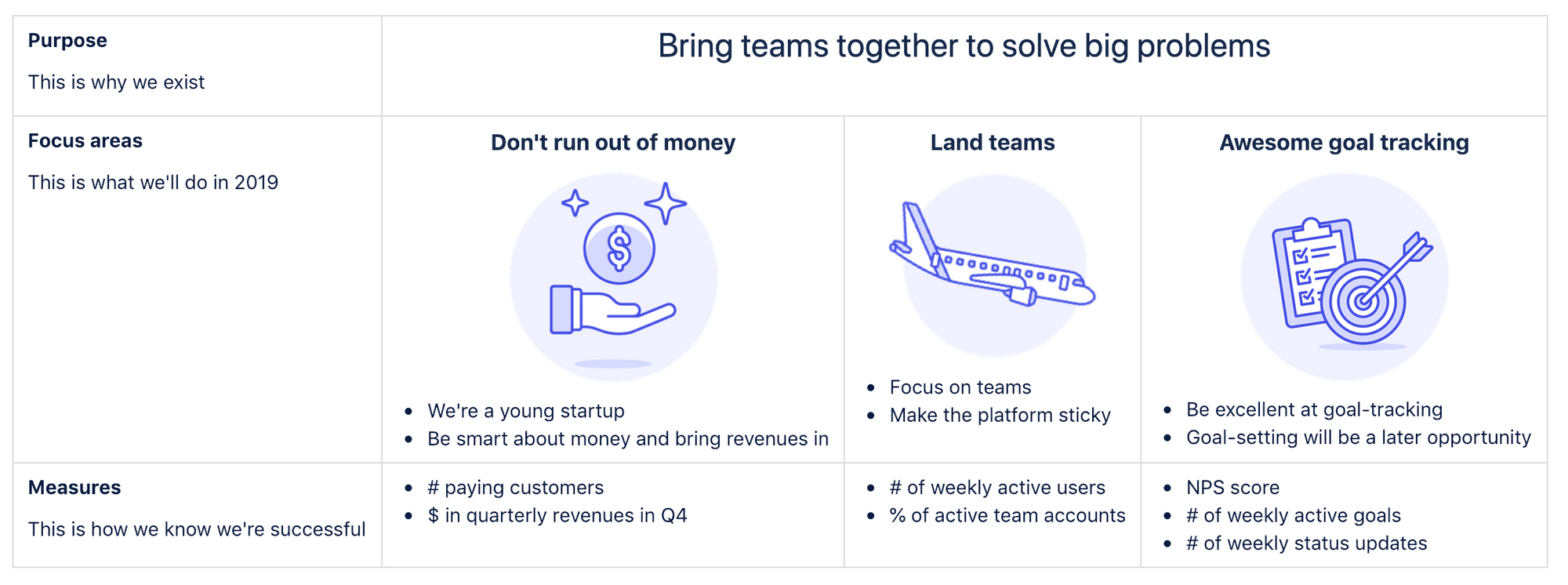A simple goal framework to collaborate remotely
Remote work has 99 benefits, but sharing a common purpose ain't one.

Last week I stumbled upon the following question on IndieHackers: "Is it possible to have a startup with the co-founders living in different countries?". We're in that exact situation at Tability with one founder (Bryan) in Portland, and the other one (me) in Sydney.

I shared a few tips on that post that I want to expand on here.
Remote problems are large teams problems
Bryan and I both worked at Atlassian before starting Tability, so we have a few years of experience working in large-ish companies (YMMV). What surprised me when we started working as a remote duo is that a lot of the issues we faced were quite similar to the problems I ran into while I was a Product Manager in a team of 20, working with a dozen of other groups across the world:
- You can't rely on over-the-shoulder communication to clarify things.
- You need to build an environment allowing people to be autonomous.
- You need to find ways to keep everyone informed and engaged.
You might object that this is true for all organizations, but you don't really feel the pain if you're a team of 5 all sitting in the same room. At that stage, it's still easy to keep everyone on the same page by standing up and talking out loud, and you're small enough that you can keep track of what each person is doing. But, add a couple more people to the team, and communication will start to break down. There's too much going on, and it becomes harder to identify the signal from the noise.
There's another way to experience that pain, even if you stay small.
Make your team remote-first. Just like we are.
Timezones and distance will produce the same communication issues that you'd have with a larger co-located team. TL;DR; we had to figure out pretty early on how to make sure we would be rowing our boat in the same direction.
Purpose > Focus > Measures (PFM)
We created a simple document that drives our effort and can be used as a sounding board when you don't have your team around you. It's inspired by a mix of our experience at Atlassian, Salesforce V2MOM and OKRs.
The model is straightforward, designed to be easily understood and quick to adopt.
Purpose at the top
The first section of the document defines our purpose as a company. This is something that should last a few years. We're still iterating on our mission statement but it goes something like that:
Bring teams together to solve big problems
It should be precise enough that it sets a clear direction, but loose enough that it doesn't stifle innovation. I'd recommend taking some time to figure it out because everything else will come down from it. Using the 5 Whys and the Jobs To Be Done is a good start, but if you're like us you'll probably do several iterations as you get to know your customers better.
Focus areas underneath
Below the purpose, we've listed our big priorities for the next 12 months. There are still no metrics at this stage. Instead, we list 2-3 focus areas that will drive our roadmap for the year.
In our case we have:
- Don't run out of money: we're a young bootstrapped startup so managing our cash flow is critical.
- Land teams: we love it when individuals use Tability, but we're building it for teams primarily.
- Awesome goal-tracking: we could expand to goal-setting but we want first to do excel at goal-tracking first.
These focus areas are fairly large and will help pick initiatives for the next 12 months. It's what we often go back to when we're putting things on the backlog. Does it help with cash flow? Does it make teams sticky? Is it making goal-tracking easy and great? If there isn't a positive answer for any of these question then it's probably not a good fit.
Measures at the bottom.
Finally, we have set 2-3 measurable goals per focus areas to help us track progress. I won't give you our exact targets but the overall document looks like the picture below.

Good goals are hard to define. It's often easy to fall for vanity metrics that do not really challenge your business. Metrics do not exist to make you feel good. They are here to make sure that you're achieving the results you need, or at least help you realize that you might not get there with your current approach.
Once you've picked a set of metrics, just run a few scenarios to double-check that they'll help you know the truth. For instance, if you focus on the growth of accounts instead of the growth of active accounts you can easily get a false sense of accomplishment if you see a lot of people signing up. But if most of the newly signed users never return to your product then your business will quickly go underground.
Overall I'd suggest not having more than 10 driving goals in your document because the more you have, the more you're going to dilute your effort. It's better to have a great impact on a few things than having lots of small improvements in different areas.
Split things into quarters
Now that our PFM doc is set up we can use it to drive the roadmap. At the beginning of each quarter, we look at what we can do to maximize impact in each of the focus areas. We always have a clear view of the next 3 months, and an outline of months 3-6. Beyond that, we can just refer back to our strategy document to understand what our priorities will be.
The goals are roughly the same as the ones in the PFM but the targets are adjusted for the quarter.
Measure, learn, adjust - on repeat
Now, this is what truly makes a difference. Creating a vision document, setting some goals is cool. But the real value is in tracking progress regularly. This is quite different from having a weekly demo, or weekly standup where you talk about what you've done in the week.
We update progress on our quarterly goal every week. It's a simple update with a red/yellow/green status as well and how far we are from the target. This is a bit akin to applying Continuous Delivery to strategy, and providing updates on a weekly basis has several benefits:
- It helps us realize pretty quickly if we're stagnating in an area, or if something is in the red
- It keeps us accountable and softens the noise that happens during the week.
- It helps us be more responsive and agile.
More importantly, it helps us drive a culture where we focus on impact rather than tasks.
Adopting the PFM
I created a Google Sheet with a PFM and a goal-tracking template which should be enough to get you started.
Obviously, we're also building a great tool to help teams track their goal. So if you're looking for something better than a spreadsheet, you should sign up for Tability. It includes automatic reminders, an accountability bot, and makes it easy to share updates and visualize progress.
I'm always keen on learning from other teams so please share your own approach and feedback in the comments, and you can always reach out to me on Twitter.

